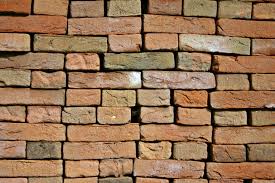
Masonry work is one area that more homeowners are venturing into, whether it’s a retaining wall or vital repairs to a chimney or fireplace. Reasons range from wanting to save money to wanting to be more self-sufficient – or even the satisfaction of completing such projects without professional help.
Of course, not all of these DIY masonry projects turn out very well at all. Everyone starts with the best of intentions, but without the requisite tools or experience, things can sometimes get away from you – even if you’ve been doing DIY projects for a long time. Here are a few of the common reasons why DIY masonry goes south:
1. Not using the correct mortar
There are different types of bricks and mortar out there, and not all of them are compatible with each other. It might take a little research to find out what combinations are readily available in your area, if you’re starting from scratch – but it’s never a bad idea to consult a masonry specialist about your project. Even if you’re not using their services, they might be willing to give you information. Otherwise you might end up using the wrong combination of bricks and mortar, and the structure could fail significantly in a short amount of time.
2. Waterproofing old bricks and mortar
A lot of DIY projects involve masonry repair, and homeowner often use waterproofing solution on old bricks and mortar in order to extend its lifespan. They may actually be doing the opposite, however, since the moisture that’s already inside the old bricks will be trapped there.
3. Incorrect flashing techniques
Flashing is very important for protecting brick walls, as it prevents the masonry work from accruing water damage over time. There are a bunch of common mistakes when it comes to flashing installation, including the very common error of leaving too much space between the weep holes.
What to look for in a professional…
DIY masonry work isn’t for everyone. If you want to give it a shot, there are plenty of materials and instructions out there. But if you want an ultra-reliable result that gets done quickly and with no doubt as to the quality or durability of the work, calling a professional might just be your best bet. There are a lot of masonry specialists out there, however, and they don’t all deliver the same quality of work. Check reviews and testimonials of masons in your area to find who the best contractors are – and don’t be afraid to ask all of your specific questions about the project at hand.
